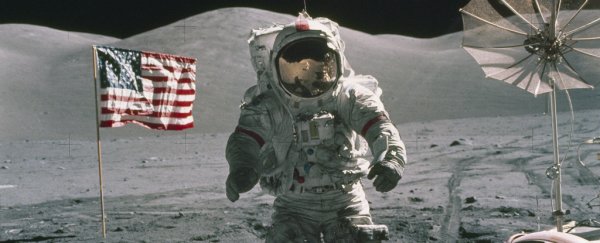Some of the glorified careers we hear about as kids include firefighters who save lives, doctors who cure illnesses, and astronauts who venture into space.
If you grew up in the US, then NASA's astronaut program is the one with which you're probably most familiar, but just how much do you know about the selection process?
Between 4,000 and 8,000 people apply during each round of NASA applications, but only eight to 35 are selected. And the next round is opening soon.
Do you have what it takes to be a NASA astronaut? Take this quick quiz to see what you know.
1. How many NASA astronauts have there been throughout history?
A. 167
B. 339
C. 47
D. 588
2. True or false: All applicants must have a bachelor's degree to qualify.
A. True
B. False
3. Besides a bachelor's degree, what else do candidates need?
A. At least 1,000 hours of pilot-in-command time in a jet aircraft.
B. A doctoral degree in science, engineering, or maths.
C. At least three years of teaching K-12 levels in science, engineering, or maths.
D. One of the above.
4. Which of the following must candidates have in order to pass NASA's astronaut physical exam?
A. They're between 62 and 75 inches tall.
B. They can run a marathon in under four hours.
C. They can hold their breath for at least 90 seconds without losing consciousness.
D. They are no older than 50.
5. Say you're one of the few candidates to be selected. Where do you go next for your NASA astronaut training?
A. Kennedy Space Centre near Cape Canaveral Air Force Station in Florida.
B. Goddard Space Flight Centre in Greenbelt, Maryland.
C. Jet Propulsion Laboratory in Pasadena, California.
D. Lyndon B. Johnson Space Centre in Houston, Texas.
6. True or False: All astronauts must have military experience.
7. When will NASA begin accepting its next round of astronaut applications?
A. Right now.
B. December 14, 2015.
C. January 2, 2016.
D. They're always accepting applications.
Answers:
1. B. 339
Since then, tens of thousands have applied for NASA's intense astronaut training program, but only 339 people have been selected. The newest members of the team were announced last July:
1. US Navy Lt. Cmdr. Josh Cassada
2. US Navy Lt. Cmdr. Victor Glover
3. US Air Force Lt. Col. Tyler 'Nick' Hague
4. Christina Hammock
5. US Marine Corps Maj. Nicole Mann
6. US Army Maj. Anne McClain
7. Jessica Meir
8. US Army Maj. Andrew Morgan
2. A. True
NASA has a number of basic qualification requirements, and the first is a bachelor's degree from an accredited institution in at least one of the following fields: engineering, biological science, physical science, or mathematics.
3. D. One of the above.
After earning a bachelor's in one of the four required fields, qualified applicants must complete at least three years of related professional experience. That can include studying an appropriate field in a graduate program, teaching K-12 levels in science, engineering, or maths, or completing at least 1,000 hours of piloting a jet aircraft.
By these standards, the astrophysicist and famed host of StarTalk Radio, Neil deGrasse Tyson, who earned his PhD in astrophysics from Columbia University in 1991, qualifies!
4. A. Astronauts must all be between 157.5 cm and 190.5 cm (62 and 75 inches) tall.
Every astronaut must pass NASA's three basic physical requirements, which are:
1. 20/20 vision in each eye – people can get PRK or LASIK surgery to correct their vision to meet the necessary requirements.
2. Blood pressure that does not exceed 140/90 in a sitting position.
3. A standing height of between 157.5 cm and 190.5 cm (62 and 75 inches), or 5.1 and 6.25 feet.
Contrary to popular belief, there are no age limits on becoming a NASA astronaut, but most candidates selected in the past were between 26 and 46.
5. D. Lyndon B. Johnson Space Centre in Houston, Texas.
Astronauts complete a two-year training program at the Lyndon B. Johnson Space Centre in Houston, Texas.
Part of the training requires that candidates become scuba-qualified and pass a swimming test to prep them for the underwater extravehicular activity training they perform at the nearby Neutral Buoyancy Laboratory. This giant 23-million-litre (6.2-million-gallon) pool simulates microgravity environments to get astronauts ready for space walks.
6. Answer: B. False
Contrary to popular belief, you do not need military experience to become an astronaut. But a little experience certainly wouldn't hurt your chances. As of the 2009 Astronaut Class, 61 percent of candidates NASA selects came from military service.
7. B. December 14, 2015.
NASA will be accepting applications for consideration from December 14, 2015, through mid-February 2016. Civilians and military personnel can apply through the Office of Personnel Management's USA Jobs site at usajobs.gov.
NASA expects to announce its selections by mid-2017.
This article was originally published by Business Insider.
More from Business Insider:
